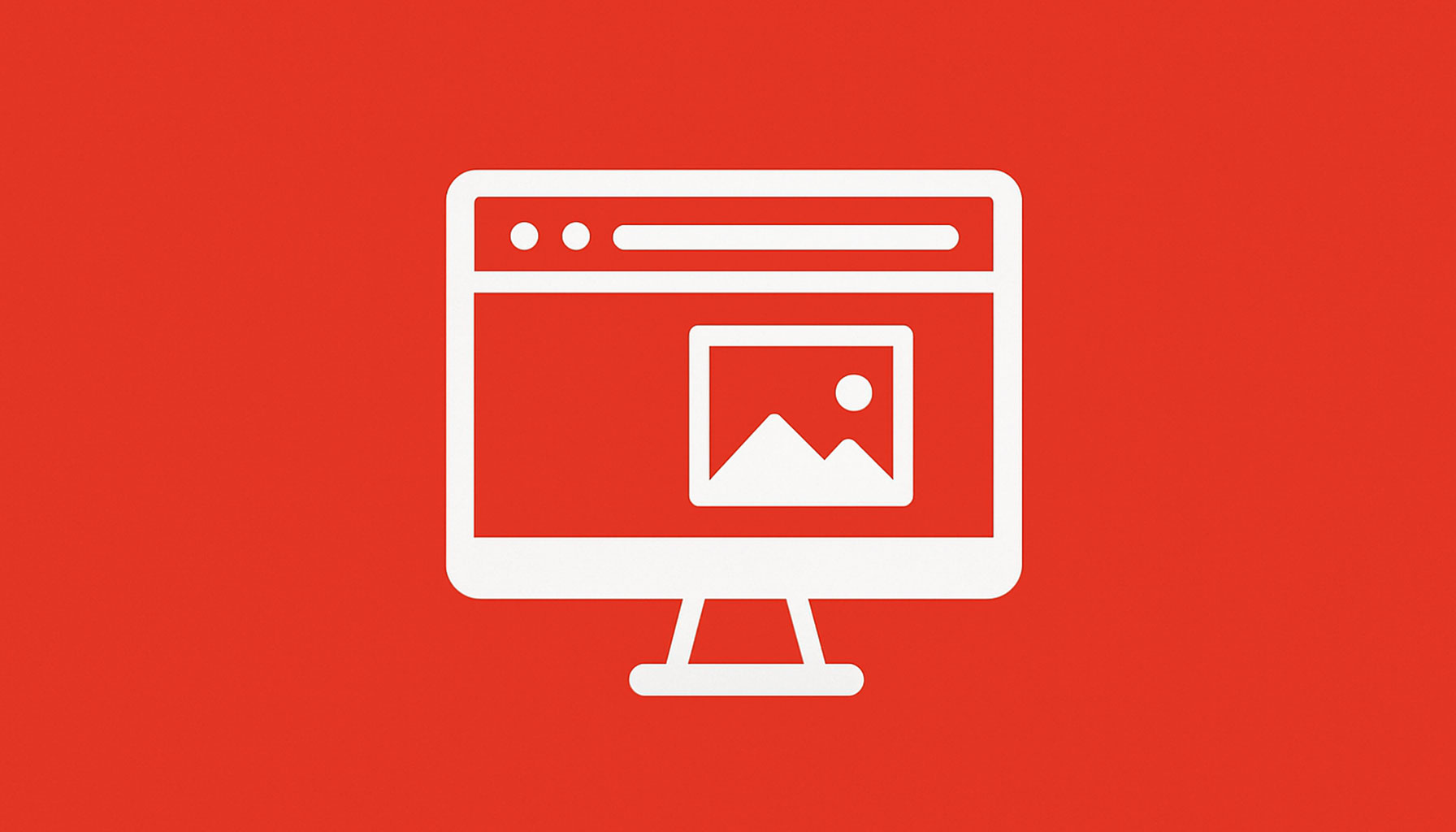Introduction: The Value of Outsourcing Web Development to India
Outsourcing web development to India has become increasingly popular among businesses worldwide. The country is known for its highly skilled workforce, cost-effective solutions, and a vast pool of technical expertise.
However, to maximize the benefits of outsourcing, maintaining quality control is essential. Quality control ensures that the final product meets your standards, aligns with your business needs, and provides a seamless user experience.
This article explores the strategies, tips, and tools that can help businesses maintain high standards of quality while working with Indian web development companies.
1. Establish Clear Communication Channels
Importance of Communication in Outsourcing
Effective communication is the cornerstone of any successful outsourced project, especially in web development. Clear and consistent communication helps bridge the geographical and cultural gaps that may exist between a business and its Indian web development team.
Misunderstandings or communication lapses can lead to delays, misaligned expectations, and ultimately, a subpar product. Therefore, establishing robust communication channels is crucial for quality control in outsourced web development projects.
Best Practices for Communication
- Set Up Regular Meetings:
Regular meetings, whether weekly or bi-weekly, ensure that all parties are on the same page. These meetings can be used to review progress, discuss challenges, and align on upcoming tasks. They provide an opportunity to address any potential issues before they become significant problems. - Use Multiple Communication Channels:
Combining various communication tools—like instant messaging for quick updates, email for detailed documentation, and video calls for complex discussions—ensures that communication remains smooth and effective. This multi-channel approach caters to different types of conversations and preferences. - Establish a Single Point of Contact:
Having a single point of contact on both sides (client and development team) helps streamline communication. This individual can act as the liaison, ensuring that messages are accurately conveyed and that updates are consistent. This reduces the chances of miscommunication and keeps everyone focused.
Recommended Tools for Communication
- Slack: Ideal for real-time messaging, file sharing, and creating specific channels for different aspects of the project. It keeps conversations organized and accessible.
- Zoom or Microsoft Teams: These tools are perfect for video calls, which can be used for regular progress meetings, demos, and addressing complex requirements.
- Trello or Asana: These project management tools have built-in communication features for discussing tasks, tracking project updates, and leaving comments directly on assignments.
2. Define Clear Project Requirements and Milestones
Why Defining Requirements is Important
Clear project requirements are vital for the success of any web development project. They ensure that the development team fully understands the scope, functionality, and expectations for the project.
Without a well-defined set of requirements, there is a risk of misalignment between what the client expects and what the development team delivers. This can result in delays, increased costs, and compromised quality.
How to Write Effective Requirement Documents
- Include Technical Specifications:
Detail the technical requirements, including preferred frameworks, database structures, server configurations, and third-party integrations. This helps the development team understand the tools and technologies required for the project. - Define Design Expectations:
Include wireframes, design mockups, or references to similar websites to help the development team understand the visual and functional expectations. Providing these guidelines reduces the chances of design discrepancies. - Clarify Desired Outcomes and Usability Goals:
Specify the business objectives and the desired user experience. This could include details like mobile responsiveness, page load speed, user interface behaviors, and accessibility standards. Clear usability goals ensure that the final product aligns with user needs.
Establishing Milestones for Continuous Monitoring
Breaking down the project into smaller, manageable phases helps in maintaining quality control. Milestones act as checkpoints, allowing you to review progress and make adjustments as needed. For instance, typical milestones might include:
- Design Approval: A review of initial design concepts to ensure alignment with branding.
- Prototype Delivery: A functioning prototype that allows for feedback on the user experience.
- First Beta Release: A near-complete version of the website that can be tested for bugs and usability issues.
- Final Product Delivery: A complete version ready for launch, followed by post-launch support.
Tools for Requirement Management
- Jira: Useful for managing user stories, tasks, and detailed requirements. It allows for detailed tracking and prioritization of tasks.
- Confluence: A documentation tool that allows teams to create detailed requirement documents and share them with stakeholders for review and collaboration.
3. Evaluate the Skill Sets and Experience of the Development Team
Importance of Assessing Team Expertise
Before partnering with a web development team, it’s essential to ensure that they have the skills and experience required to meet your project’s needs.
A skilled team is more likely to deliver high-quality work and can handle challenges more effectively. Evaluating the team’s capabilities helps you mitigate risks associated with inexperience, which can lead to project delays and additional costs.
How to Evaluate Developers’ Skills
- Conduct Technical Interviews or Coding Tests:
Assess the team’s proficiency in specific programming languages, frameworks, or technologies that are critical for your project. Technical interviews and coding tests can provide a clear understanding of their capabilities. - Review Past Projects and Client Testimonials:
Examining the development team’s portfolio gives insight into their past work and the types of projects they have successfully delivered. Client testimonials can also provide valuable feedback on the team’s reliability and work quality. - Ask for Portfolio Demonstrations or a Trial Period:
A trial period allows you to evaluate the team’s work processes and communication style. It also helps you determine if they can deliver to your standards before committing to a long-term partnership.
Tips for Choosing the Right Outsourcing Partner in India
- Specialization in Required Technologies: Choose agencies that have a track record of working with the technologies you need.
- Client References and Feedback: Speak with past clients to understand their experience with the agency.
- Cultural Compatibility: Select a team that understands your business culture and values, as this can significantly impact collaboration.
4. Implement Agile Development Practices
Advantages of Using Agile for Quality Control
Agile methodologies have become the gold standard for software and web development projects, especially when working with outsourced teams. Agile practices emphasize adaptability and frequent feedback, which is essential for maintaining high-quality standards. Here’s why Agile is beneficial in the context of outsourcing:
- Flexibility in Managing Changes:
Agile enables the project team to adapt quickly to changes in requirements. This is particularly valuable in web development projects, where design and functionality adjustments often occur based on user feedback or new business needs. - Encourages Frequent Testing:
Agile practices, like continuous integration and regular sprint reviews, ensure that testing is a constant part of the development process. This reduces the chance of major issues going undetected until the end of the project. - Fosters Transparency:
Agile’s emphasis on daily stand-ups and sprint reviews ensures that the client is kept in the loop about progress and challenges. This transparency builds trust and enables quicker issue resolution.
How to Integrate Agile Methodologies
- Use Sprints for Iterative Progress:
Break down the project into smaller sprints, each lasting 2-4 weeks. Each sprint should focus on delivering a specific feature or part of the project. At the end of each sprint, review the progress and gather feedback for adjustments. - Involve Stakeholders in Sprint Reviews:
Clients should be involved in sprint review meetings to ensure the work aligns with their vision. This allows them to provide feedback in real time, helping the development team to make necessary adjustments early on. - Establish a Backlog of User Stories:
Define user stories that describe the functionality from an end-user perspective. Prioritize these stories based on business needs. A clear backlog ensures that the development team focuses on delivering the most critical features first.
Popular Agile Tools
- Scrum Boards in Jira: A robust platform for managing backlogs, sprints, and user stories. It allows the team to visualize the project’s progress.
- Monday.com: A user-friendly tool for planning and visualizing Agile workflows, tracking tasks, and ensuring transparency.
- GitLab or GitHub Projects: Ideal for managing version control and collaboration, allowing developers to track changes, review code, and integrate new features seamlessly.
5. Focus on Code Quality and Version Control
Code Review Practices for Quality Assurance
Ensuring high-quality code is one of the most critical aspects of maintaining standards in web development.
Regular code reviews help identify potential bugs, improve code readability, and ensure that coding standards are adhered to throughout the project. Here’s how to implement code review practices:
- Establish Code Review Guidelines:
Define standards for code style, commenting, and best practices. These guidelines should be shared with the development team to ensure consistency in the codebase. - Conduct Peer Code Reviews:
Peer reviews, where team members review each other’s code, are effective for catching issues early and promoting knowledge sharing within the team. They ensure that the code is aligned with project requirements. - Incorporate Continuous Integration (CI):
Use CI pipelines to automatically run tests and check for code quality every time new code is committed. This ensures that any issues are detected as soon as they are introduced into the codebase.
Tools for Code Quality Management
- SonarQube: Provides automated code reviews with static analysis, helping identify code smells, bugs, and security vulnerabilities.
- ESLint or Prettier: These tools help enforce coding standards, especially in JavaScript-based projects. They ensure that the code is clean, consistent, and free of syntax errors.
- GitHub Actions: Automates testing, building, and deploying code. It integrates seamlessly with GitHub repositories to run tests whenever new code is pushed.
Using Version Control Effectively
Version control is fundamental for managing changes in the codebase, particularly in collaborative environments like outsourcing. It helps track modifications, merge changes, and roll back to previous versions if necessary.
- Implement Branching Strategies:
Use branching strategies like GitFlow or Feature Branches to isolate changes. This makes it easier to manage different features or bug fixes without affecting the main codebase. - Regularly Merge Code:
Encourage the team to merge code frequently into the main branch after testing. This practice minimizes the complexity of integrating large changes and ensures that the main branch remains stable. - Use Pull Requests for Merging Code:
Pull requests facilitate code reviews before new changes are merged. This allows team members to review the proposed changes and suggest improvements or identify potential issues.
6. Perform Regular Testing and Quality Assurance
Types of Testing to Ensure High-Quality Output
Testing is crucial for delivering a web application that performs as expected. Regular testing helps detect issues early and ensures that the final product is free of bugs and meets performance standards. Key types of testing include:
- Unit Testing:
Focuses on testing individual components or functions of the web application to ensure that they work as intended. This helps catch issues at an early stage of development. - Integration Testing:
Tests the interaction between different components or modules of the web application. This ensures that various parts of the system work together seamlessly. - User Acceptance Testing (UAT):
This final phase of testing is conducted by end-users or stakeholders to verify if the product meets their requirements and expectations.
How to Set Up a Robust Testing Process
- Define Testing Criteria:
Establish a test plan that includes criteria for success, specific test cases, and scenarios. Define what needs to be tested, such as functionality, user experience, and performance. - Create a Testing Environment:
Set up a testing environment that closely mirrors the production setup. This helps in accurately testing how the web application will perform when it goes live. - Involve Clients in UAT:
Engage clients in the user acceptance testing phase to ensure that the delivered product aligns with their expectations. Their feedback during this stage can help identify any final tweaks needed before launch.
Recommended Testing Tools
- Selenium: An open-source tool for automating browser-based testing. It’s ideal for testing the functionality and user experience of web applications.
- Postman: A popular tool for testing APIs, ensuring that integrations work as expected.
- BrowserStack: Allows for cross-browser testing on various devices, ensuring that the web application performs well across different browsers and devices.
7. Ensure Data Security and Compliance
Importance of Data Security in Outsourcing
Data security is a critical concern when outsourcing web development, as sensitive business information is often shared with the development team. Failing to secure this data can result in breaches, loss of customer trust, and compliance violations.
Therefore, it’s vital to take measures to protect your intellectual property and ensure that the outsourced team follows security best practices.
Steps to Secure Your Project Data
- Sign NDAs and Contracts:
Use Non-Disclosure Agreements (NDAs) and contracts to legally protect your intellectual property. This sets clear expectations for data confidentiality and usage. - Encrypt Data Transmission:
Use encrypted channels like SSL/TLS to ensure secure data transmission between your systems and the outsourced team. This prevents unauthorized access to sensitive information. - Use VPNs for Remote Access:
Require the development team to use VPNs when accessing servers or databases remotely. This adds an extra layer of security, especially when working with teams across different geographical locations.
Security Tools for Outsourced Development
- Cloudflare: Provides security against DDoS attacks, protects APIs, and ensures secure data exchanges.
- AWS Security Hub: A comprehensive service that monitors security best practices and compliance across AWS accounts.
- 1Password or LastPass: For securely sharing access credentials with the outsourced team, ensuring that sensitive data remains protected.
8. Leverage Project Management Tools for Better Oversight
Why Project Management Tools Are Essential
Project management tools are crucial when outsourcing web development projects to India as they provide a structured way to manage tasks, track progress, and ensure that deadlines are met.
These tools bring transparency to the workflow, allowing clients to monitor the project’s status in real-time. Here are some of the key benefits:
- Centralized Communication:
Project management tools act as a hub where all stakeholders can communicate, share updates, and provide feedback. This reduces the chances of miscommunication or misunderstandings during the project lifecycle. - Milestone Tracking:
Setting up milestones helps keep the project on schedule by breaking it down into smaller, manageable stages. It also helps in evaluating the quality of deliverables at each stage. - Document Management:
These tools allow both the client and the development team to store and access project-related documents, specifications, and feedback in one place. This ensures that everyone is on the same page.
Recommended Project Management Tools
- Trello: Uses a board-and-card system to manage tasks. It’s simple to use and ideal for tracking tasks and progress visually.
- Asana: A more feature-rich tool that allows for task assignments, deadline tracking, and project planning. It’s great for detailed project management.
- Jira: Particularly suitable for Agile projects, Jira offers advanced functionalities for sprint management, bug tracking, and backlog prioritization.
Best Practices for Using Project Management Tools
- Define Roles and Responsibilities:
Clearly outline the roles of each team member within the tool. This helps in identifying who is responsible for specific tasks and ensures accountability. - Set Up a Reporting Structure:
Define how and when updates will be shared. For example, weekly progress reports can be provided to give an overview of completed tasks, challenges, and next steps. - Integrate with Communication Tools:
Link project management tools with communication platforms like Slack or Microsoft Teams to enable real-time updates. This keeps conversations connected to tasks and projects, ensuring that important information doesn’t get lost.
9. Foster Effective Collaboration and Cultural Understanding
Bridging Cultural Differences
Working with an outsourced web development team in India means interacting across cultural and time zone differences. Effective collaboration is essential to ensure that quality standards are met.
Understanding cultural nuances and communication styles can significantly improve the working relationship between your business and the development team.
- Cultural Awareness Training:
It can be beneficial to provide basic cultural awareness training to both parties. This helps in building mutual respect and understanding, which is key to a successful working relationship. - Respect Time Zones:
India is typically ahead of the USA and European time zones. Plan meetings that are suitable for both teams to ensure productive discussions. Tools like World Time Buddy can help find overlapping working hours. - Encourage Open Communication:
Foster an environment where both sides feel comfortable sharing their ideas, feedback, and concerns. This helps in addressing potential issues before they become larger problems.
Building a Collaborative Workflow
- Use Video Conferencing for Regular Check-ins:
Regular video calls help establish rapport and ensure that all team members are aligned on the project goals. Video calls are more personal than emails and foster a sense of teamwork. - Document Everything:
Keep detailed records of discussions, decisions, and project updates. This helps maintain clarity on the project’s direction and ensures that both parties are aligned on the scope of work. - Create a Feedback Loop:
Establish a system for providing feedback regularly. This can be in the form of weekly reviews or end-of-sprint retrospectives. It helps the outsourced team understand what is working well and where improvements are needed.
10. Conduct Final Quality Assurance and User Testing
The Importance of Final QA
Before launching the web project, conducting a comprehensive quality assurance (QA) phase is essential.
This phase involves testing the final product to ensure that it meets all requirements, functions properly across different devices, and offers a smooth user experience. The QA process is crucial for catching any last-minute bugs or issues that might affect the user experience.
- Cross-Browser Testing:
The website should be tested across different browsers (like Chrome, Firefox, Safari) to ensure consistency. This helps identify any design or functionality issues that are browser-specific. - Device Compatibility Testing:
With the growing variety of mobile devices, it’s essential to test how the website behaves on different screen sizes. This ensures that the site offers a seamless experience for users on smartphones, tablets, and desktops. - Performance Testing:
Tools like Google PageSpeed Insights and GTmetrix can help analyze the website’s performance and suggest improvements for speed and loading time. A fast website is not only crucial for user satisfaction but also plays a role in SEO.
Tools for Final QA
- Selenium: Ideal for automating functional tests and simulating user interactions.
- BrowserStack: Enables real-time testing on a variety of browsers and devices.
- Apache JMeter: A valuable tool for performance and load testing, ensuring that the website can handle high traffic without slowing down.
11. Monitor and Review Post-Launch
Continuous Improvement Post-Launch
Quality control doesn’t end with the project’s completion. After the website is live, it’s important to monitor its performance, gather user feedback, and make iterative improvements. This is particularly crucial in the first few weeks after launch, when users may encounter issues that were not identified during the testing phase.
- Track User Behavior with Analytics:
Use tools like Google Analytics to monitor how users interact with the website. Look for high bounce rates or drop-offs, which may indicate usability issues that need to be addressed. - Gather User Feedback:
Use feedback forms or conduct surveys to understand user satisfaction. Direct feedback from users can provide insights into potential improvements that can enhance the user experience. - Schedule Regular Maintenance:
Plan regular maintenance and updates to ensure that the website remains secure and functions smoothly. This includes updating plugins, security patches, and optimizing databases.
How to Engage with Your Development Team for Updates
- Monthly Review Meetings:
Conduct monthly review meetings with the development team to discuss performance, new feature requirements, or potential improvements. This keeps the team engaged and ready for future updates. - Use a Bug Tracker:
Set up a bug tracker where users and team members can report issues. This helps in keeping track of any problems that arise post-launch and ensures timely resolution. - Focus on SEO Performance:
Since the website’s visibility depends significantly on its SEO performance, track keyword rankings and search engine performance using tools like Ahrefs or SEMrush. This will help identify any technical SEO issues that may need to be addressed.
Conclusion: Ensuring Quality Control Through Collaboration and Best Practices
Outsourcing web development to India offers numerous benefits, including access to skilled talent and cost-effectiveness. However, maintaining high standards of quality requires careful planning, effective communication, and the use of the right tools.
By implementing the best practices outlined in this guide—from choosing the right partner and fostering collaboration to using Agile methodologies and conducting thorough quality assurance—you can ensure that your web development project is a success.
Whether you are an SEO company, a digital agency, or a business looking to enhance its online presence, maintaining control over the quality of your outsourced projects is essential for achieving your long-term goals.
With the right approach, outsourcing web development to India can be a seamless process, providing you with high-quality deliverables that align with your business objectives.





